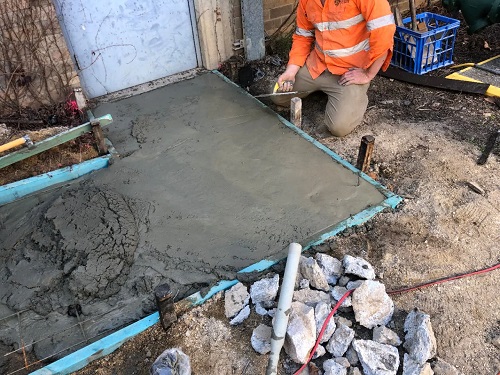 Monday, September 30, 2024
Monday, September 30, 2024  Monday, September 30, 2024
Monday, September 30, 2024 
University of Sydney researchers successfully create environmentally friendly, carbon dioxide-loaded cement using waste and industrial by-products.
University of Sydney researchers have successfully poured “green” cement – pavement made from a unique mix of fly ash, and waste materials including ground glass and gaseous carbon dioxide.
The trial “eco-pavement” has saved 752kg of sand from being dredged and 327kg of carbon dioxide being emitted into the atmosphere, while its production has saved the equivalent energy of 1,000 cups of coffee or driving a car over 1,800km.
Concrete production is an energy intensive process that involves sand and aggregate dredging, contributing to erosion and environmental degradation.
Director of the Waste Transformation Research Hub and School of Chemical and Biomolecular Engineering researcher, Professor Ali Abbas notes this cement was designed to counteract the environmental impacts of traditional concrete production.
“Traditional concrete production is energy and resource intensive, yet is one of the most common materials used by the construction industry,” said Professor Abbas, who worked alongside Delta Electricity, and in cooperation with recycling company, IQ Renew, construction materials and industrial minerals supplier Morgan Ash: an Adbri Company, to develop the technology.
“We sought to create a less energy intensive solution that would have less impact on the environment using carbon-capture and beneficially reusing materials that would otherwise end up in landfill.”